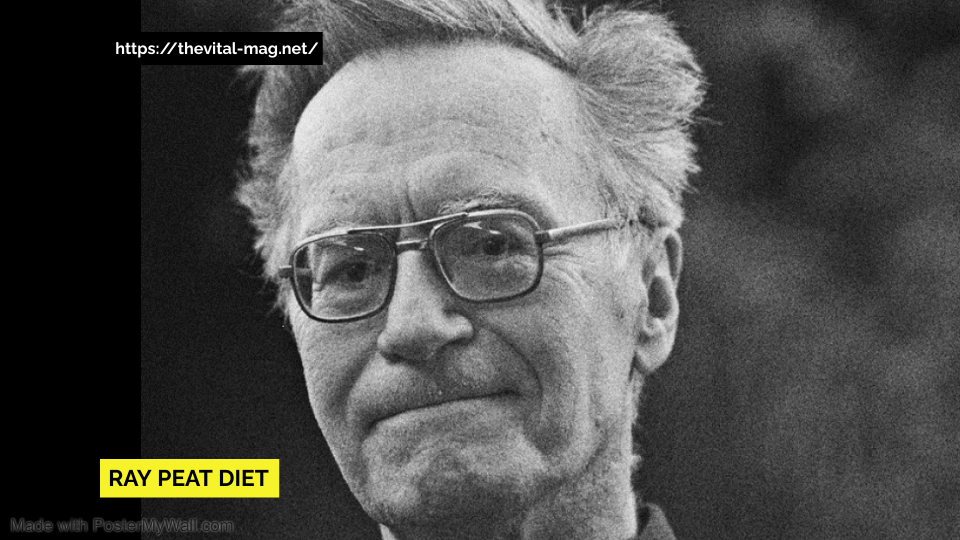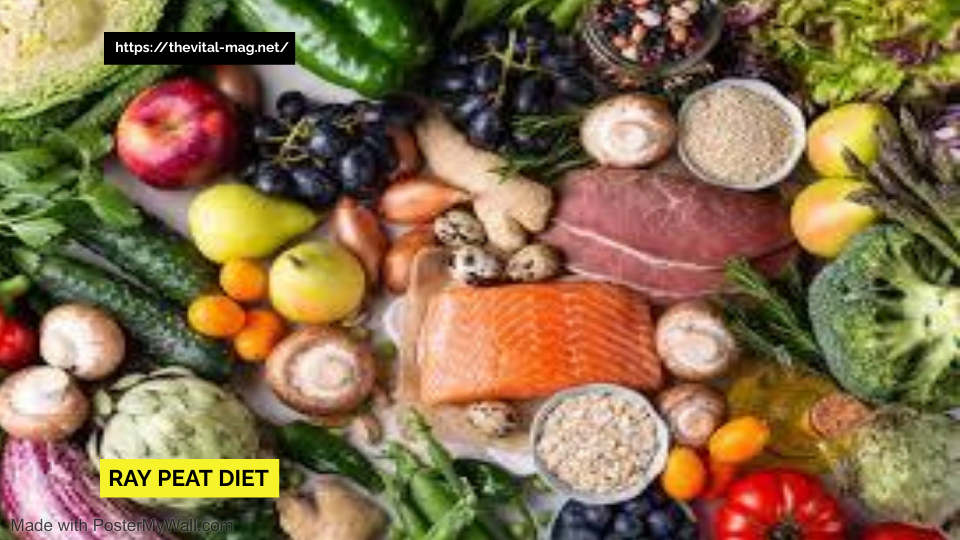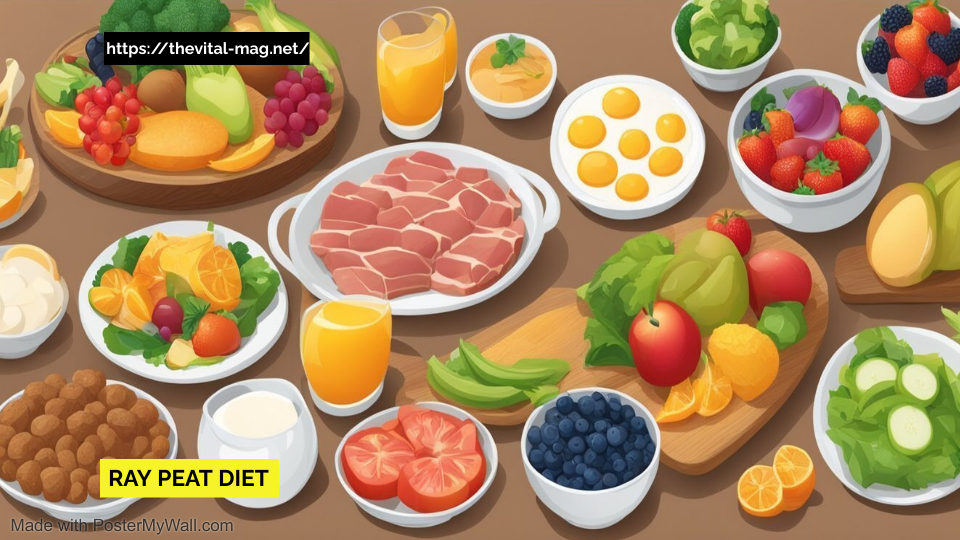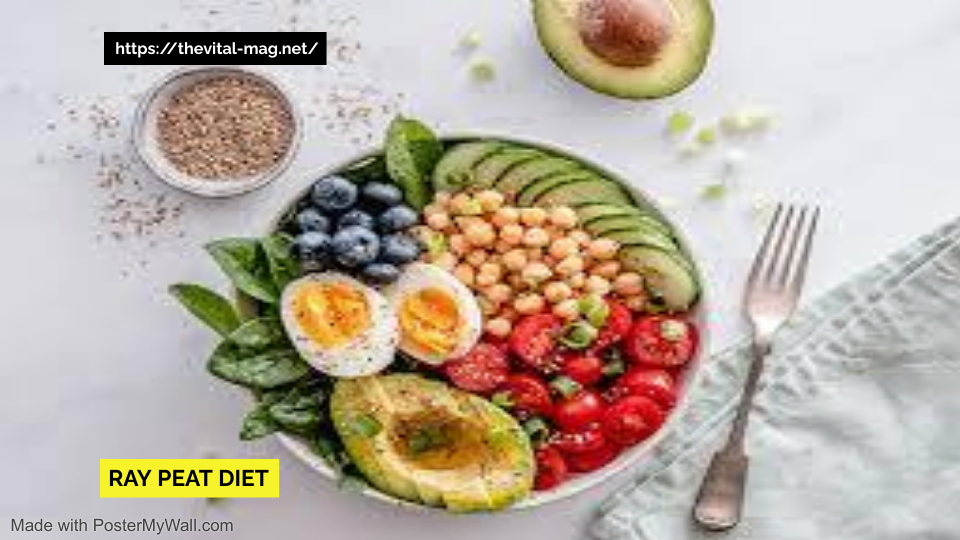The Ray Peat Diet has emerged as an exclusive approach to nutrition, contemplating on metabolic health and hormonal stability. Developed by Dr. Ray Peat, a biologist with an enthusiastic pursuit of physiology and nutrients, this food plan emphasizes the significance of precise food choices to enhance energy production and typical well-being. In this comprehensive guide, we will discover the principles of the Ray Peat Diet, its advantages, potential downsides, and how it compares to other dietary methods.

Who Is Ray Peat?
Ray Peat (1936-2022) was a biologist and researcher who devoted his life to analyzing the interaction between nutrients, hormones, and health. His work on progesterone and other endocrine hormones, for instance, thyroid and estrogen, laid the foundation for the Ray Peat Diet. Peat’s theories confront conventional dietary recommendations, advocating for a focus on metabolic health as opposed to calorie limits or macronutrient ratios. His thoughts have garnered a devoted following, with many people adopting his dietary standards to enhance their health.
What Is the Ray Peat Diet?
The Ray Peat Diet is a group of eating guidelines designed to promote metabolic fitness and hormonal balance through pro-metabolic dietary modifications. The food plan encourages the intake of healthy fats, mild protein, carbohydrates, coffee, and mild quantities of white sugar whilst strictly keeping off polyunsaturated fatty acids (PUFAs).
Key Components of the Ray Peat Diet
| Component | Description |
| Carbohydrates | Prioritizes fruits, root veggies, and dairy as primary carbohydrate resources. |
| Fats | Emphasizes saturated fats from resources like coconut oil, butter, and cheese while fending off PUFAs. |
| Protein | Encourages slight protein intake from dairy, eggs, and lean meats. |
| Sugar | Permits for mild use of white sugar, especially in the context of energy production. |
Rules of the Ray Peat Diet
The Ray Peat Diet follows particular recommendations that intend to optimize metabolic function and aid cellular energy production Key principles comprise of:
| Rule | Description |
| Frequent Meals | Increase meal frequency in the day to maintain energy levels. |
| Avoid Intermittent Fasting | Focus on regular ingesting in place of extended fasting. |
| Caloric Intake | No strict guidelines for macronutrient ratios; but, a widespread consumption of 2000 calories is recommended for weight reduction. |
| Protein Intake | Devour a minimum 80g of protein every day from dairy, gelatin, and low-PUFA seafood. Energetic people can also need more. |
| Carbohydrate Pairing | Integrates protein resources with carbohydrates to enhance metabolism. |
| Saturated Fats | Include mild quantities of saturated fats like butter and coconut oil. |
| Raw Dairy | Use unpasteurized dairy products whilst viable for maximum nutrients. |

How Does the Ray Peat Diet Work?
The Ray Peat Diet operates on the basis that imparting the body with abundant strength from carbohydrates and fats can support metabolic function, promote hormonal balance, and reduce inflammation. By emphasizing meals rich in precise nutrients and compounds, like vitamin C and thyroid hormones, the diet aims to create a pro-metabolic environment that fosters optimum physiological performance.
Ray Peat Food Pyramid
The Ray Peat Food Pyramid provides a visual representation of the endorsed foods on this diet, emphasizing a balanced consumption of fruits, vegetables, dairy, and healthy fats.
| Food Group | Recommended Foods |
| Fruits | Oranges, bananas, berries, apples, and mangoes |
| Vegetables | Uncooked carrots, leafy vegetables, and cooked root veggies |
| Dairy | Milk, cheese, yogurt, and cottage cheese |
| Proteins | Eggs, lean meats (chicken, turkey, beef), and fish |
| Fats | Coconut oil, butter, olive oil, and avocado oil |
| Others | Gelatin, coffee, and honey |
Foods Not Allowed at the Ray Peat Diet
The Ray Peat Diet strictly avoids certain meals believed to be destructive to metabolic health, such as:
- Polyunsaturated Fats (PUFAs): Found in vegetable oils, nuts, and seeds, these fats are connected to inflammation and metabolic dysfunction.
- Soy Products: Often averted because of their estrogenic outcomes.
- Unfermented Grains: These may be tough to digest and might contribute to gut issues.
- Legumes: Just like grains, legumes also can be complex for some people.
- Processed Foods: Enormously processed meals are typically avoided due to their lack of nutritional value and potential health risks.
What Kind of Fat Should You Eat on the Ray Peat Diet?
The Ray Peat Diet emphasizes the intake of healthy fats, such as:
- Coconut Oil: Known for its medium-chain triglycerides (MCTs), which are effortlessly metabolized for energy.
- Butter: A resource of fat-soluble vitamins and beneficial fatty acids.
- Olive Oil: Abundant in monounsaturated fats and antioxidants.
- Avocado Oil: Another source of healthy fats that could help heart health.
These fats are believed to support metabolic function and provide strength without the potential negative results with PUFAs.

Who Should Be at the Ray Peat Diet?
The Ray Peat Diet may be appropriate for people looking to optimize their metabolic health, increase strength levels, and promote overall well-being. It could especially benefit people who struggle with low energy, hormonal imbalances, or inflammation-related conditions. But, it’s important to note that the diet might not be suitable for everyone, and individual needs may vary.
Ray Peat Diet Benefits
Proponents of the Ray Peat Diet claim that it could offer numerous potential benefits, including:
- Improved Metabolic Function: By supplying the body with the essential nutrients and strength, the food plan targets to enhance metabolic processes.
- Reduced Inflammation: The focus on antioxidant-rich meals can also help fight inflammation.
- Balanced Hormones: The diet’s emphasis on particular nutrients can aid hormonal balance, especially thyroid function.
- Improved Cognitive Function: Support for metabolic health might also result in improved brain function and intellectual clarity.
- Improved Skin Health: The diet’s cognizance of nutrient-dense meals may also contribute to healthier skin.
Ray Peat Diet Downsides
Whilst the Ray Peat Diet has won recognition, it is essential to remember potential downsides and risks:
- Nutrient Deficiencies: Limited food choices may result in deficiencies in certain vitamins and minerals, in particular, if not carefully planned.
- Digestive Issues: Some people may experience digestive soreness because of the excessive consumption of dairy products or modifications in dietary fiber intake.
- Weight Management: The emphasis on carbohydrates and fats may also lead to weight gain if not balanced with suitable portion sizes and physical activity.
- Lack of Long-Term Research: There is confined research on the long-term effects of the Ray Peat diet, making it tough to evaluate its safety and efficacy over time.
Inflammation and Heart Disease
One of the major criticisms of the Ray Peat Diet is its capability to increase the risk of inflammation and coronary heart disease because of the excessive intake of saturated fats and the avoidance of PUFAs. However, proponents argue that the diet’s emphasis on antioxidants and the avoidance of processed meals can assist reduce inflammation and aiding heart health as was once believed. A meta-analysis published in the American Journal of Clinical Nutrition discovered no substantial association between saturated fat intake and cardiovascular disorder threat. This indicates that the connection between dietary fats and heart health is more complicated than formerly concept.
Obesity
The high intake of carbohydrates and fats in the Ray Peat Diet may also cause weight gain and obesity if now not balanced with suitable portion sizes and physical activity. In line with the World Health Organization (WHO), obesity rates have nearly tripled since 1975, highlighting the need for effective dietary strategies. Individuals thinking about the Ray Peat Diet should monitor their caloric consumption and engage in regular physical activity to keep a healthy weight.

Type 2 Diabetes
The Ray Peat Diet’s emphasis on carbohydrates may also increase concerns about the potential for developing type 2 diabetes. However, proponents argue that the food plan’s attention on supporting metabolic function and lowering inflammation can assist prevent and manage the condition. A study published in the Journal of Clinical Endocrinology & Metabolism found that a food plan rich in fruits and vegetables was related to a lower risk of developing type 2 diabetes, aligning with the principles of the Ray Peat diet.
Increased Mortality
Some studies have suggested that a diet high in saturated fats and low in PUFAs may be associated with an extended risk of mortality. However, the proof is mixed, and more research is required to determine the long-term effects of the Ray Peat diet on mortality rates. A review published in Nutrition Reviews highlights the need for further investigation into the relationship between dietary fats and health results.
Mood Swings and Tiredness
Some individuals can also experience mood swings, tiredness, or other negative effects during the initial stages of the diet because of modifications in nutrient consumption and metabolic processes. Adjusting to a new dietary pattern can take time, and individuals might also need to be patient as their bodies adapt.
Increased Hunger
The emphasis on carbohydrates and fats can also lead to increased starvation in some people, particularly if portion sizes are not well managed. Monitoring hunger cues and practicing mindful eating can help people stay on the right track with their dietary goals.
Cancer and Fatty Liver
The Ray Peat Diet’s avoidance of PUFAs may have implications for cancer prevention and treatment, as PUFAs were shown to have anti-cancer properties in some studies. Additionally, the food plan’s emphasis on carbohydrates and fats may increase issues about the potential for developing fatty liver disorder. However, proponents argue that the food plan’s attention on helping metabolic function and decreasing inflammation can help prevent and control these situations.

What Differentiates the Ray Peat Diet from Other Diets?
The Ray Peat diet differs from other popular diets in its cognizance of metabolic health and hormonal balance, its emphasis on saturated fats and avoidance of PUFAs, and its encouragement of frequent meals and mild protein intake.
| Differentiator | Ray Peat Diet | Other Diets |
| Focus | Metabolic health and hormonal balance | Weight reduction, calorie restriction |
| Fat Sources | Emphasizes saturated fats, avoids PUFAs | Varies broadly; often consists of PUFAs |
| Carbohydrate Intake | High carbohydrate intake from fruits and dairy | Varies; some diets limit carbs |
| Protein Sources | Moderate protein from dairy and lean meats | Varies; often consists of an extensive range of resources |
| Meal Frequency | Frequent meals encouraged | Varies; some suggest intermittent fasting |
7-Day Ray Peat Diet Meal Plan
Here’s a sample 7-day meal plan for the Ray Peat Diet, designed to offer a selection of nutrient-dense meals whilst adhering to the standards of the diet:
| Day | Breakfast | Snack | Lunch | Snack | Dinner |
| 1 | Omelets with cheese, butter, and raw carrots | Fresh orange | Salad with blended veggies and avocado | Greek yogurt with honey | Baked salmon, roasted sweet potatoes, and steamed broccoli |
| 2 | Greek yogurt with fresh berries | Raw carrots with dip | Turkey and cheese sandwich on sourdough | A chunk of fruit | Beef stir-fry with mixed veggies |
| 3 | Pancakes made with eggs and milk | Cottage cheese with pineapple | Grilled chicken salad | Gelatin dessert | Pork chops, mashed potatoes, and green beans |
| 4 | Oatmeal with milk and cinnamon | Fresh fruit | Tuna salad on mixed greens | A handful of berries | Baked cod, roasted sweet potatoes, and broccoli |
| 5 | Scrambled eggs with cheese | Greek yogurt with honey | Grilled cheese sandwich | A chunk of fruit | Beef and vegetable stew |
| 6 | Greek yogurt with granola | Raw carrots with dip | Chicken Caesar salad | A piece of fruit | Pork tenderloin, roasted potatoes, and green beans |
| 7 | Omelet with cheese and fresh fruit | Cottage cheese with peaches | Turkey and cheese sandwich | Gelatin dessert | Baked salmon, roasted sweet potatoes, and broccoli |
Conclusion
The Ray Peat diet offers a unique method for optimizing metabolic health and promoting sturdiness. through emphasizing the significance of presenting the body with ample strength from carbohydrates and fats, whilst also incorporating particular nutrients and compounds believed to aid cellular function, the diet pursuits to create a pro-metabolic environment that helps overall well-being. however, it’s vital to notice that the Ray Peat diet may not be appropriate for anybody and that person’s needs might also vary. before starting any new dietary technique, it’s always best to consult a healthcare expert or registered dietitian to ensure that it aligns with your health goals and medical history. by following the Ray Peat diet principles, individuals may discover a route to improved metabolic health, increased energy levels, and improved overall well-being.
You can access the American Journal of Clinical Nutrition and other nutrition journals if more information is required on metabolic health and dietary approaches.
Write for Us
Are you passionate about health, fitness, and wellness? Share your expertise and insights with our wide audience by contributing to our platform! We’re looking for original, engaging articles on topics such as health, fitness, nutrition, and wellness. Your work can help educate and inspire thousands of readers, while also building your online presence. Articles should be between 800-1500 words, written in a clear and accessible style, and include proper citations for any referenced studies or statistics. For submission of an article Contact Us, with “Guest Post Submission” in the subject line. Include a short bio and a link to your website or social media profiles. Join us in promoting a healthier, more informed community!






